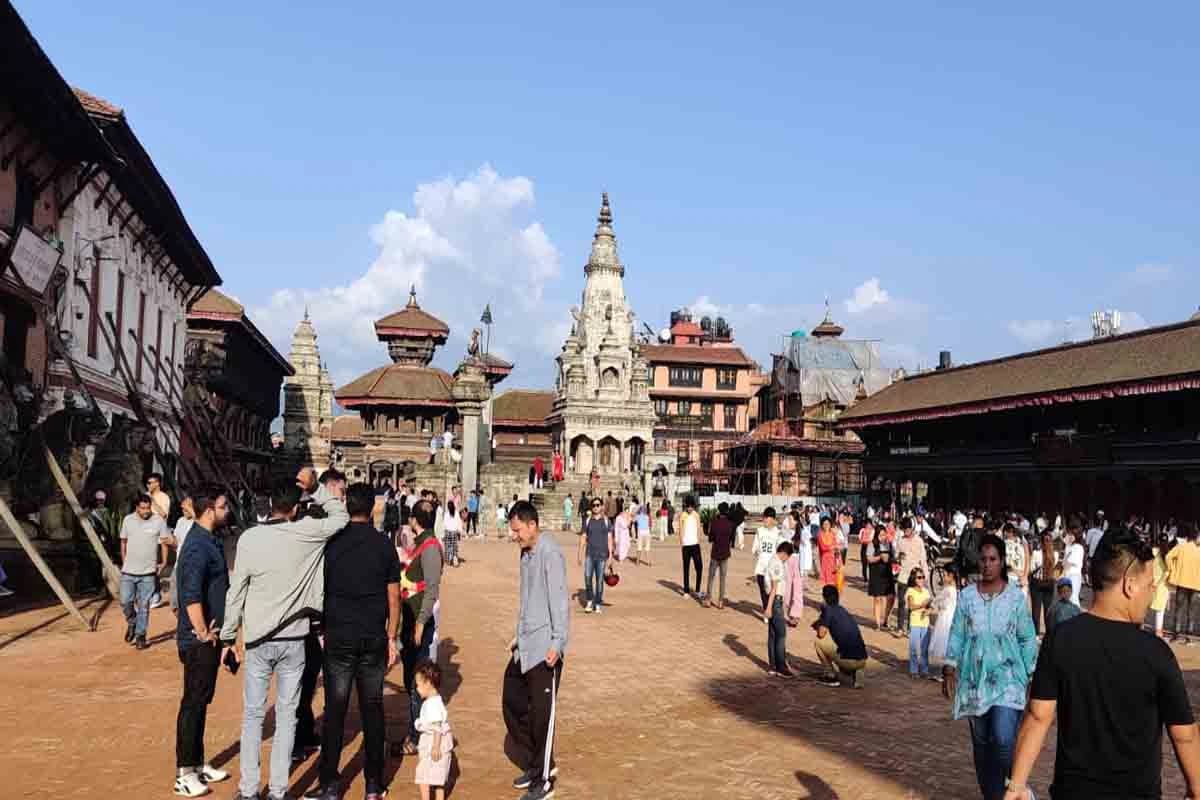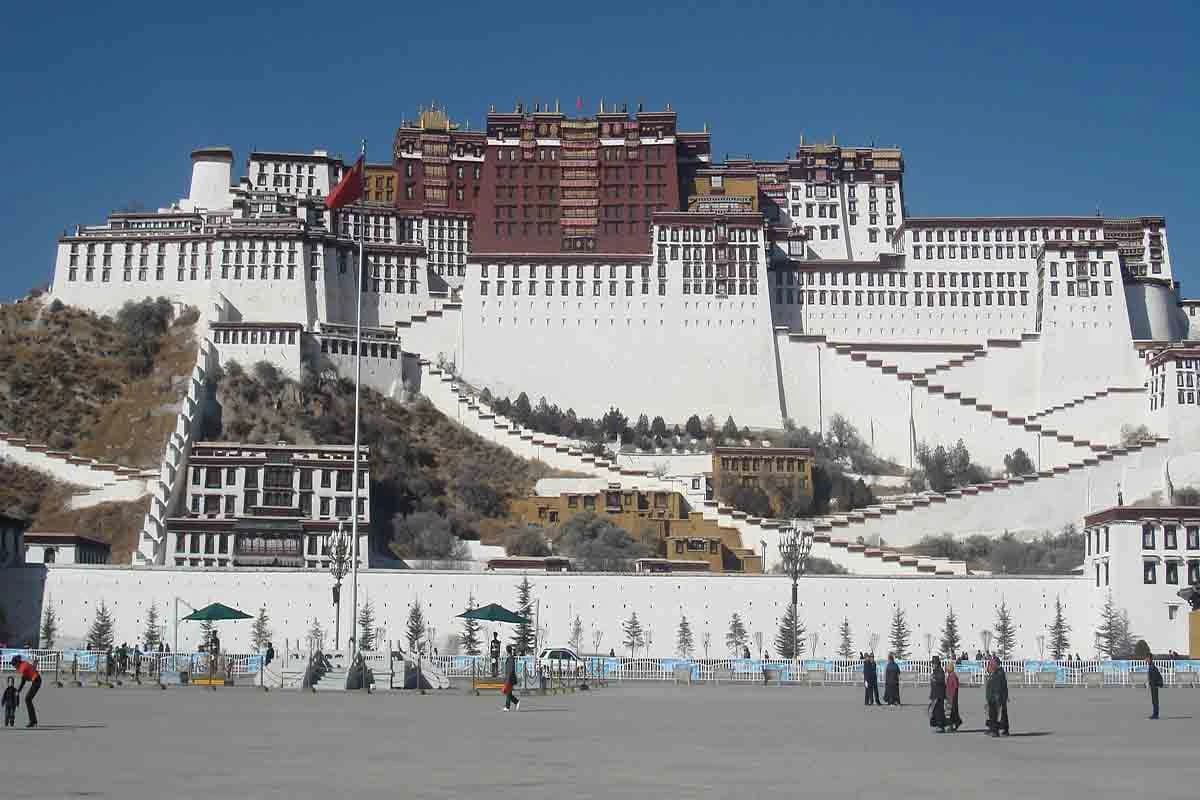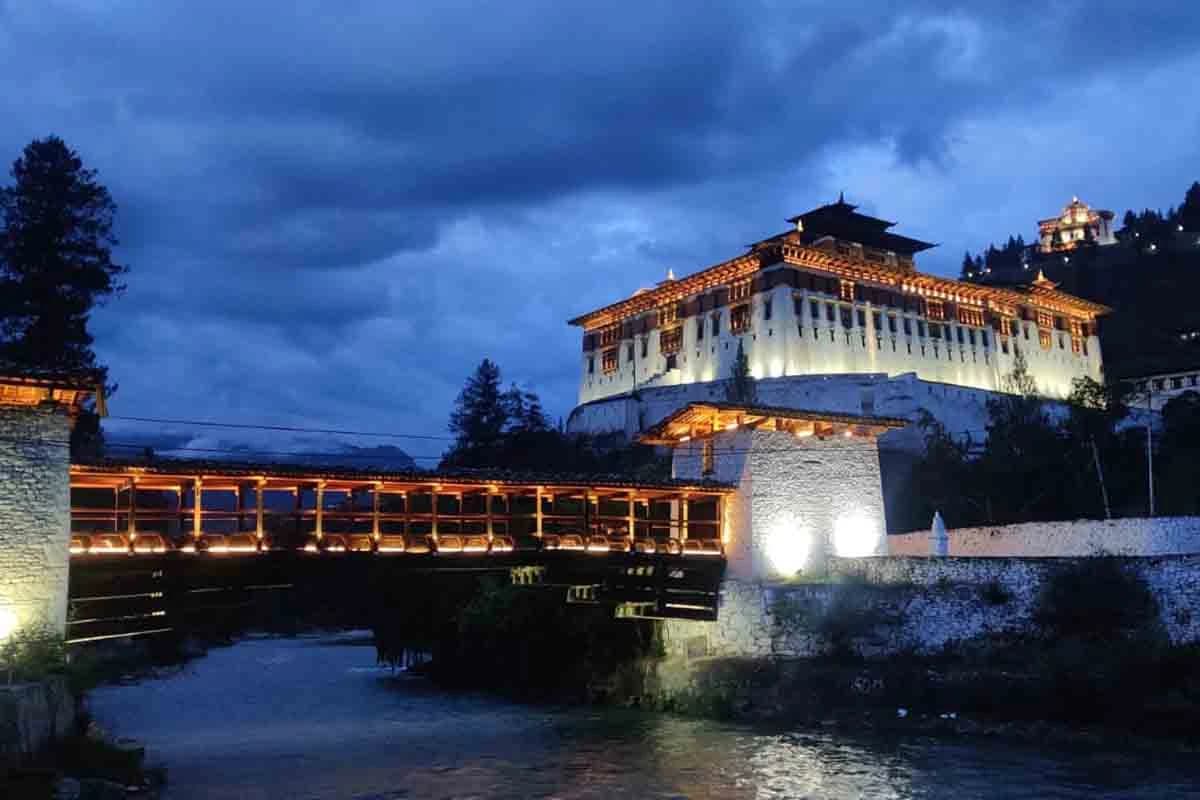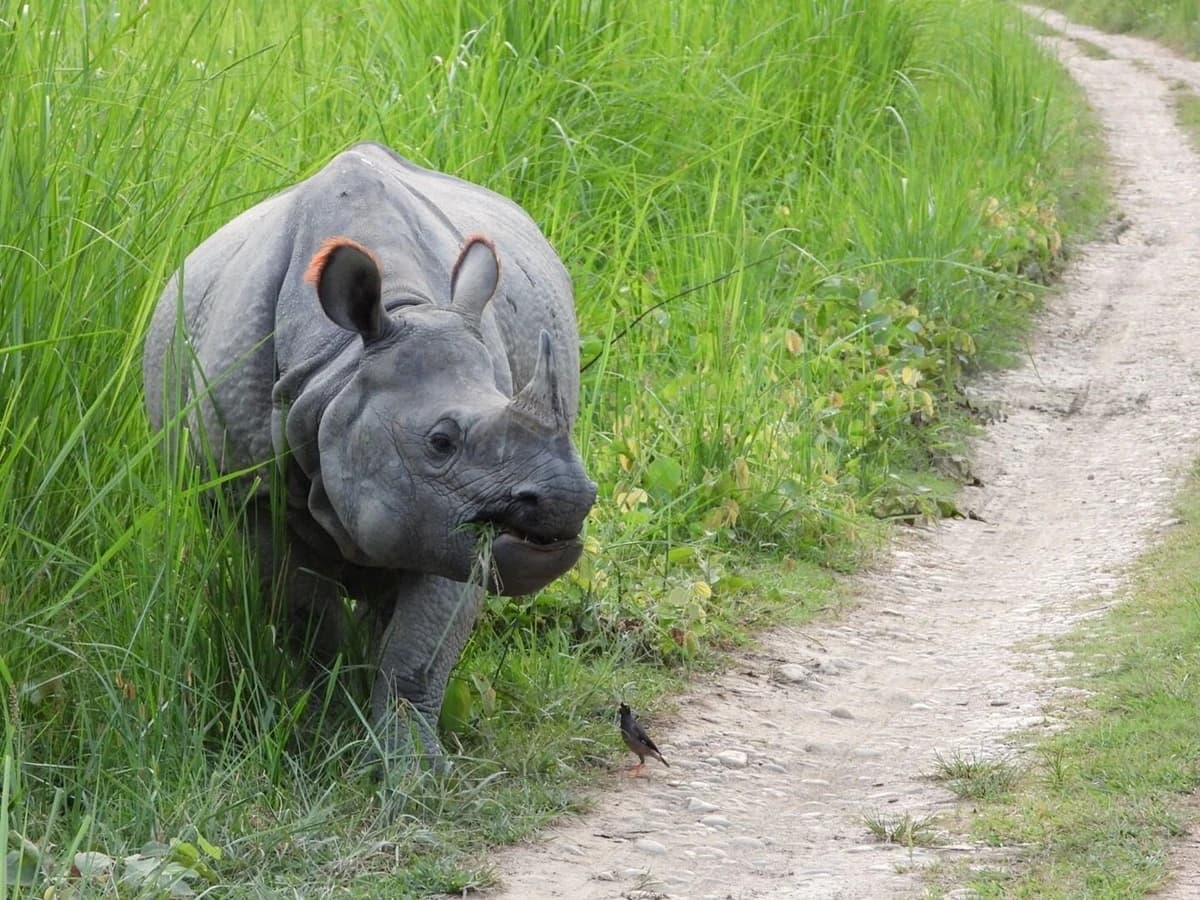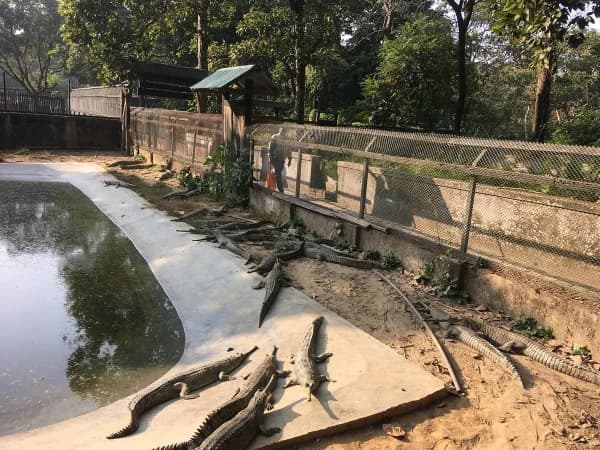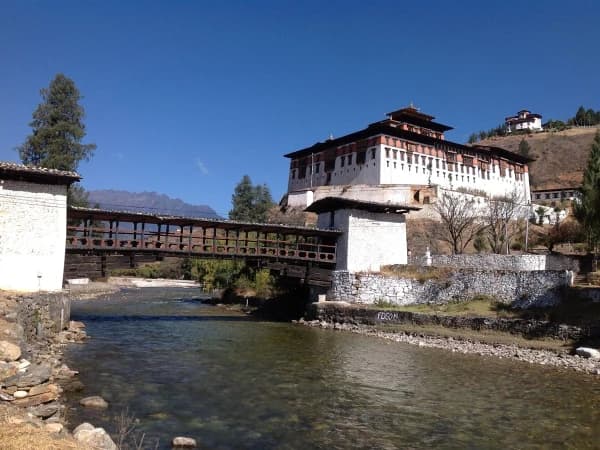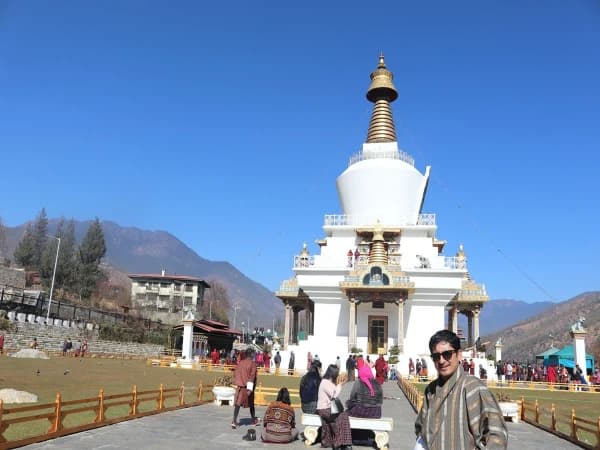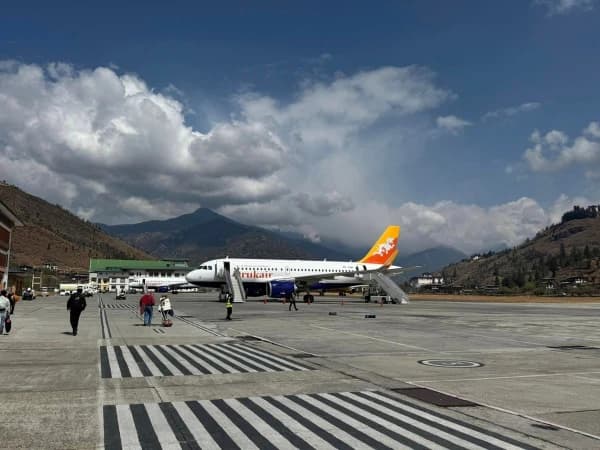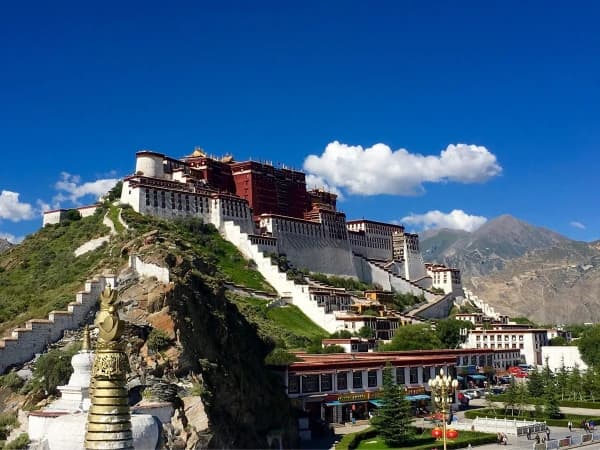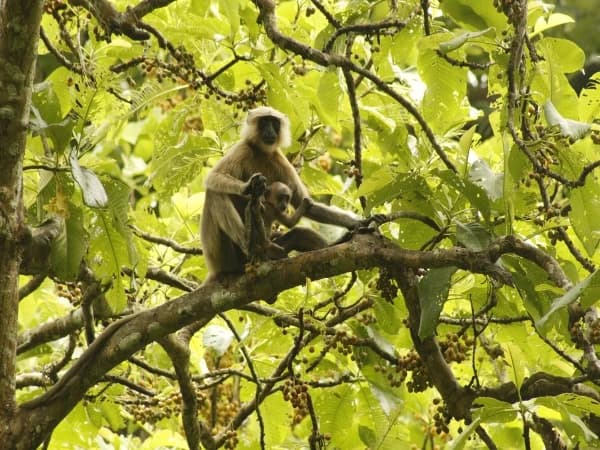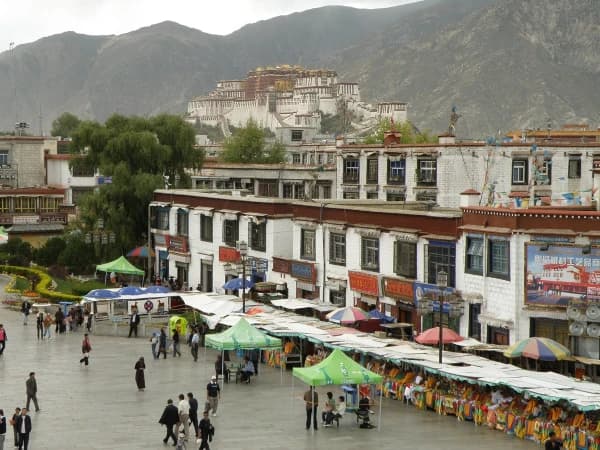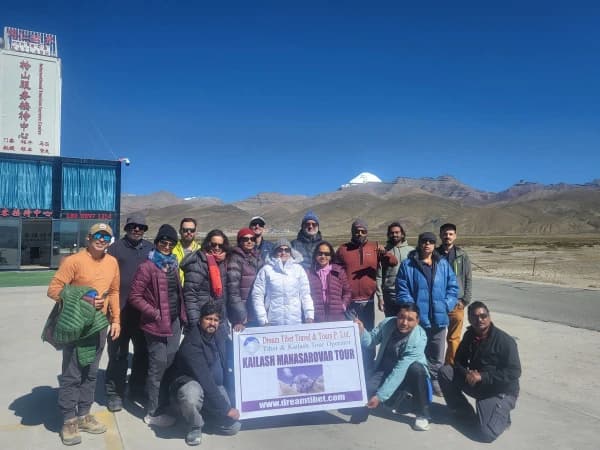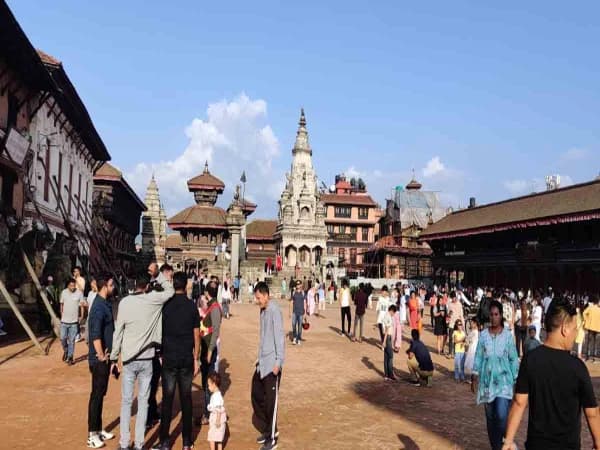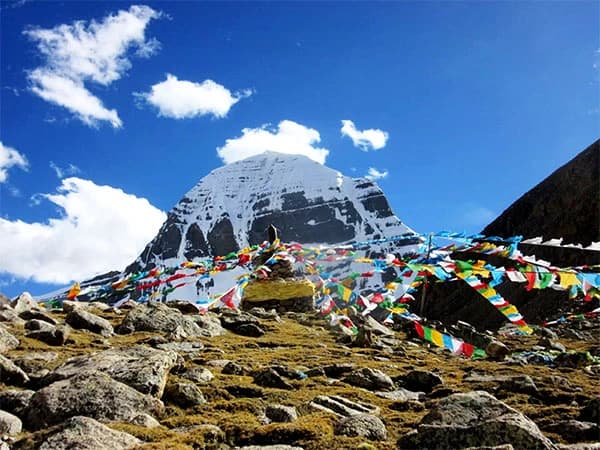Nepal Tibet Bhutan Tour Introduction
The 16-Day Nepal, Tibet, Bhutan Tour is an experience like no other and contains the best of 3 of the most beautiful countries in the Himalayas at the same time. This one-off holiday package is the best for seeing the wonderful people, culture, and traditions of Nepal, and the fantastic landscapes and spiritual culture of Tibet and Bhutan, at the best package price in 2025.
Starting in Kathmandu, the first stop of the itinerary and the tour continues with Pokhara, the beautiful lakeside city with incredible views of the Annapurna range, and then an adventurous safari experience in Chitwan National Park with rhinos, elephants, exotic birds, and more.
You'll travel to Tibet, known as "the Roof of the World", and visit the holy sites of Lhasa, Potala Palace, Jokhang Temple, and learn about Tibetan Buddhism and culture.
Your last stop is Bhutan, called "the Land of the Thunder Dragon", characterized by peaceful monasteries, untouched valleys, and vibrant traditional villages. You will visit Paro Taktsang (Tiger's Nest Monastery) and be treated to terrific Bhutanese hospitality.
This organized trip, with Dream Tibet Travels, offers a well-planned 16-day trip with plenty of sightseeing, local culture, and best of all, the luxury of time to relax, making this opportunity an incredible trip if you want to see the highlights of these Himalayan gems in a limited time
We are happy to inform you that you can now book Nepal-Tibet tours for either 2025 or 2026, and from any country. We offer the best package prices so you can enjoy your experience in the Himalayas.
You will be happy to know that many countries do not need a visa for China or Tibet until December 2025 and mid-2026, including most European countries, many Asian countries, and some South American and Middle Eastern countries.
Get in touch with us to book your tour, and you can experience a great time in Nepal-Tibet We have great prices to offer you.
Multi-Country Himalayan Tour Package Highlights
- Explore the Kathmandu Valley, UNESCO World Heritage Sites: Swayambhunath (Monkey Temple), the Temple of Pashupatinath, Boudhanath Stupa, Durbar Squares of Kathmandu, Patan & Bhaktapur.
- Visit the living Goddess "Kumari" at Kathmandu Durbar Square. Get a taste of the Himalayas from Nagarkot or Sarangkot (sunrise view). Explore Pokhara beautiful lakes, a view of the Annapurna range, and adventure (boating, trekking, paragliding).
- Experience the wildlife adventure of a "jungle safari" in Chitwan National Park. Experience the spiritual heart of Tibet—Lhasa. Visit the impressive Potala Palace and the sacred Jokhang Temple.
- Visit the Sera and Drepung Monasteries and Norbulingka Palace.
- Experience the local vibrant culture of Barkhor Street. Possible visit to Everest Base Camp (Rongbuk Monastery).
- Experience the distinct plateau landscapes and Tibetan monasteries.
- Starting Paro, a scenic flight and discover the dzongs (fortress-monasteries). Hike or horse ride to the well-known Tiger's Nest Monastery (Taktsang).
- Experience Bhutanese culture in Thimphu Tashichho Dzong, Memorial Chorten, and Buddha Dordenma. Visit Punakha Dzong and enjoy the river views and Himalayan passes.
Nepal: The Land of Grain & God & Mt. Everest
Nepal is an area of rugged beauty and spirituality. It is a land of fertile plains and abundant crops, of temples and worship, and it is high above this is Everest, always watching over it all, a monument to nature.
There are local festivals, rich and astonishing ancient traditions, and a welcoming spirit of hospitality in abundance, making this a perfect spiritual pilgrimage and wanderers' sense of a spiritual journey.
Tibet: The Land of Snows (Bhod Gangchen-Jong)
Mysterious Tibet is the land of snow. A remote, high-altitude, starkly beautiful landscape with immense spirituality. On the Himalayan plateau, nestled among its most remote monasteries that connect to the most ancient and arcane wisdom of Buddhism.
The hardy Tibetan culture that exists in the valleys and mountains has now encountered and endured the selfish midlife trauma of dislocation.
One may experience, whether at pilgrimage in Lhasa's Potala Palace, or holy Mount Kailash, that the journey across Tibet is a transcendental experience far beyond one's faith and one's culture; the Tibetan landscape is difficult to separate from the beauty of nature.
Bhutan: Kingdom of Happiness
See Bhutan: the Kingdom of Happiness, a land of happiness and peace, peacefully drifting from the great Himalayas. Bhutan has a "Gross National Happiness" policy, the benchmark of political balance between government, development, and long-term cultural preservation.
Bhutanese culture exists in a way of life developed over hundreds of years and is showcased in the new ways of Bhutan's untouched green plains, colourful dzongs, and colourful festivals.
The sheer untouched beauty of Bhutan, along with the happiness of its people, is captivating for any conscious traveller; it is in the spiritual and cultural heart of Bhutan where happiness is found underneath prayer flags layered on top of the mountain ranges.
Explore Three Himalayan Kingdoms in One Journey in 2025, 2026
Indulge in a one-of-a-kind Tri-Country Himalayan Tour, where you will visit three amazing Himalayan kingdoms, all in one fabulous itinerary.
Using the ongoing success of our Multi-Country Himalayan Tour, a new itinerary has been developed to let you experience the culture, landscape, and spiritual exploration of Nepal, Bhutan, and Tibet, all in one trip, without the attrition of three trips.
This is the perfect itinerary for those who do not have the full time needed to fully appreciate all there is to offer, and this presents a remarkable opportunity to visit three distinct countries in one experience.
From serene monasteries to monuments like Everest, this itinerary encompasses the Himalayas in one fantastic experience.
Why Choose a 16 Days Nepal Tibet Bhutan Tour?
- Explore three Himalayan kingdoms Nepal, Tibet, and Bhutan in one seamless, well-paced Multi‑Country Himalayan Tour package.
- Immerse in centuries of culture: visit Kathmandu’s UNESCO World Heritage Sites, Lhasa’s Potala Palace and sacred monasteries, and Bhutan’s iconic dzongs.
- Experience natural wonders: scenic mountain flights over Everest, tranquil Yamdrok Lake in Tibet, and breathtaking Tiger’s Nest monastery in Bhutan.
- Includes wildlife safari in Nepal’s Chitwan National Park—chance to see rhinos, tigers, and diverse birdlife.
- Perfect for travelers short on time: efficient itinerary covers major highlights in just 16 days.
- Hassle-free logistics: visas, internal flights, permits, and transfers arranged ahead.
- Local expert guides in each country provide in-depth insights into Buddhist and Himalayan traditions.
- Flexible and private: many operators offer options to customize the itinerary to your travel style.
Combined Nepal Tibet Bhutan Tour Private and Custom Itinerary
Our Nepal, Tibet, and Bhutan Combined Tour is the most inclusive and perfect way to enjoy the best of the Himalayas, all in one African adventure.
Rather than booking individual trips to these individual countries, this combined tour allows you to experience three different types of culture and landscape, all without the hassle of trying to piece together three different plans.
As you are aware, we are a specialist in private, fully-customised tours, meaning you can set your own pace (slow or fast), choose your travel dates (within annual dates), and preferred activities and sights (you can get off the beaten path).
As a fully private tour, your group will be the only participants, and a dedicated guide and vehicle will be provided for your entire trip, giving you loads of flexibility.
Because you will have a custom itinerary, you will have a travel experience that matches exactly what you are looking for, that combines Nepal's diverse heritage, Tibet's spiritual highlands, and Bhutan's peaceful valleys, for a lifetime adventure.
Who Should Join This 16-Day Himalayan Adventure?
The 16-Day Himalayan Adventure is designed for single travelers or groups of friends, families, and couples, specifically for students, adventurers, culture seekers, and photographers who want to experience the incredibly diverse wildlife of Nepal, Tibet, and Bhutan in one amazing adventure.
This trip suits adventure travelers aged from 18 to 65 and includes sightseeing and light adventures, which allow for all fitness levels. Also, families with children 10 years of age and older, small groups, and independent travelers would enjoy the tailor-made service, especially as a private, guided independent tour.
Essence of Nepal Bhutan Tibet Tour 16 days Cost 2025, 2026
The total price range for the Essence of Nepal, Bhutan, Tibet Tour 16 Days package for the years 2025 and 2026 price range is estimated at USD 4,200 to 4,800 USD; the price will vary according to group size and seasons of travel. This estimate includes all known accommodation costs, guided tours, permits, internal transportation, and cultural experiences in our three Himalayan countries, which is usually what you care about.
If you want the adjustments to fit into your regular itinerary, we will arrange this usually, and there will be flexibility in whatever you choose, and there will not be any extras, so you may simply adapt as you like in changing your itinerary. There will be slight options within the itinerary, where if you feel you want to, you may upgrade to hotel luxury accommodations, or another private vehicle if you wish, just advise us of your choices.
You can count on this to be an all-inclusive, hassle-free Himalayan experience for 16 days.
When to Book?
When planning a multi-country tour of Nepal, Tibet, and Bhutan with Dream Tibet, it is critical to book 3-6 months in advance for travel in 2025/2026 during peak periods, which are Spring (March-May) and Autumn (September-November). During peak processing is your best chance to accommodate spots for small or large tours of Nepal, Bhutan, and Tibet.
Because the peak seasons offer the mildest temperatures throughout the day (between 15-20°C daytime in Kathmandu and Bhutan and between 10-20°C in Tibet) with very little rain and predominately clear skies, they offer the best potential for trekking and cultural activity. The Spring season offers a blossoming landscape with vibrant greens and color. In contrast, the Autumn landscape will provide crisp air and host major festivals (Dashain in Nepal and perhaps the Thimphu Tshechu, one of Bhutan's largest festivals).
Winter (November-February) is budget-friendly for Tibet, and you can expect sunny weather, with much colder nights, with possible lows of -8°C at night in Lhasa. The primary monsoon season (June-August) is not only wet and rainy in Nepal and Bhutan, but it will also be affected by the monsoon.
Please contact Dream Tibet to customize your itinerary and availability.
